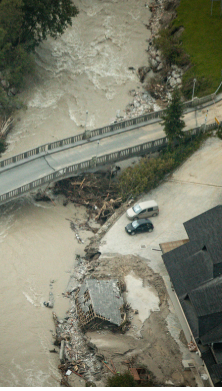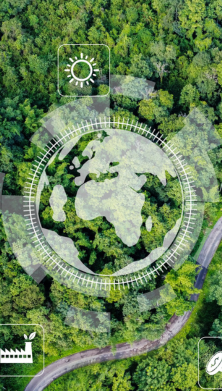This article is part of the
Global Risk Dialogue - 02/2023

NeuConnect will directly link two of Europe’s largest energy markets for the first time, enabling both countries to share low-carbon electricity across their borders.
The technology that makes this possible is an interconnector – a series of high-voltage cables that allows electricity to be transported between national grids. The €2.8bn ($3bn) NeuConnect project will enable 1.4GW of electricity to flow in either direction along 725km (450 miles) of land and undersea cables through British, Dutch, and German waters.
When it comes into operation in 2028, this ‘invisible energy highway’ could deliver enough electricity to power 1.5 million homes and reduce carbon emissions by more than 13Mt over 25 years [1].
Currently the largest single biggest German-British infrastructure project, NeuConnect will link the Isle of Grain in southeast England with Wilhelmshaven, a town on Germany’s North Sea coast. Allianz is an investor in the project in a consortium with Meridiam, Kansai Electric Power, and TEPCO, as well as lead insurer for the Onshore Construction All Risks and co-lead for the Offshore Construction All Risks.
“Interconnectors will be essential to bolstering the renewable infrastructure build-out as we transition towards net zero by allowing power produced from these sources to be more easily transported to where it is required,” says Adam Reed, Global Leader – Offshore Renewables and Upstream Energy at Allianz Commercial.
“By directly linking the grids of Germany and the UK, NeuConnect will help both countries broaden their energy supply and enhance their resilience to external events that can disrupt supply.”
Construction on the project is underway, with Prysmian Group contracted to design, manufacture and install the cables, and Siemens Energy contracted to design and build two converter stations in the UK and Germany and commission the interconnector.
“An interconnector requires careful consideration of manufacturing, design, and testing standards to ensure the cable meets the necessary specification,” says Reed. “It then needs to be loaded onto a vessel and transported, often in several shipments, to the installation site. From there, it must be safely installed by suitable vessels to link onshore substations at either end of the cable via the marine environment, where conditions can be highly variable.”

Aerial photographs showing the NeuConnect project as it starts to take shape

Risk reduction and mitigation
Significant planning and reviews, including by third parties, should be undertaken across this range of activities, and suitably experienced suppliers and contractors utilized, in order to reduce the associated risks and ensure that the projects are delivered safely.
“As part of the Allianz net-zero transition plan, we are actively supporting the transition towards renewable energy sources and investing in climate and clean-tech solutions,” says Reed.
“Reaching net zero will require partnerships to be formed in a global joint effort by financial institutions, corporates, and governments. Cross-border projects like NeuConnect are an example of what can be achieved, regardless of national boundaries, in securing a future supply of renewable energy for millions.”
References
[1] Allianz, Allianz invests in first ever German-British energy link NeuConnect, July 21, 2022
Images: AdobeStock
















